

Damion Smy
Hyundai i30 N TCR celebrates 10 years of ‘N’ with Gran Turismo 7 debut
10 Hours Ago
Even at $52k the Tucson Highlander represents good value for money, thanks to the extensive list of luxury features and spacious cabin.
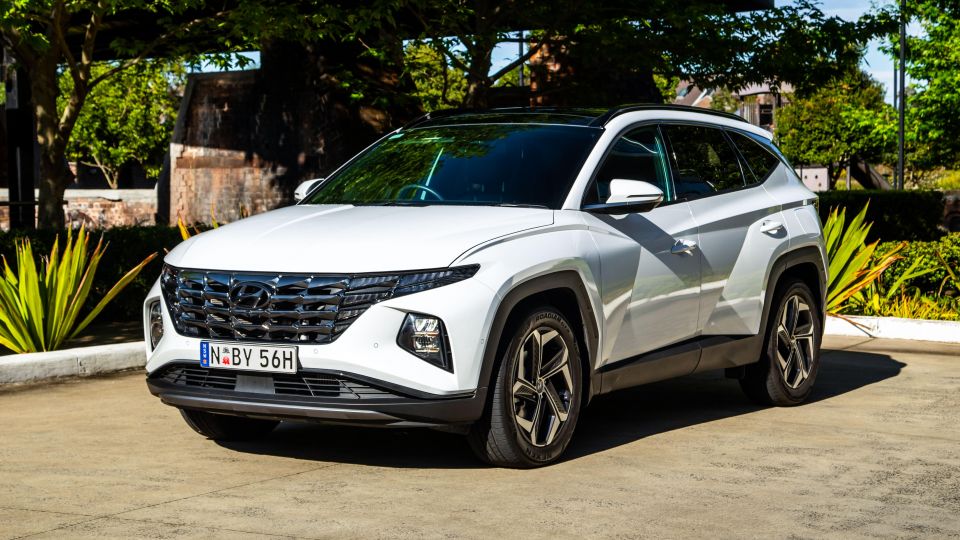
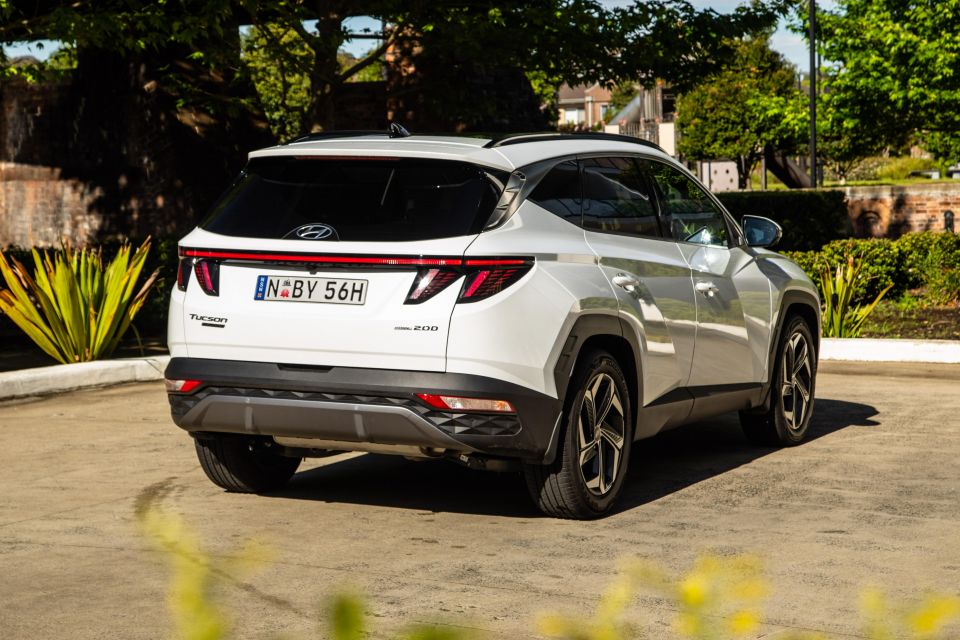

Quickly see how this car stacks up against its competition. Select any benchmark to see more details.
Where expert car reviews meet expert car buying – CarExpert gives you trusted advice, personalised service and real savings on your next new car.
The global upheaval caused by the COVID-19 pandemic has tended to warp our perception of time over the last couple years, so you might be surprised to learn the current Hyundai Tucson has already been around since April 2021.
And yet every time I see one on the road it still looks fresh to me and utterly contemporary. But here’s the thing, I still can’t make my mind about Tucson’s edgy design up against the smoother, more subtle lines of arch rival and close cousin, the Kia Sportage.
While most cars are designed with one or two character lines that tend to give shape to the side profile, I count six individual lines and creases on the Tucson. It’s a lot for the eye to take in and a vastly different approach to the Sportage which boasts a more appealing look to me.

Nevertheless, I do like the front and rear-end treatments on the Tucson, especially the grille and its hidden daytime running lights, as well as the full-width LED light bar at the rear that joins to the two sets of snake-fang tail light assemblies. The Kia Sportage has a similar strip, but it doesn’t light up.
In fact, I’ve never been so undecided about two same-segment vehicles which share so much underneath, yet look so completely different in the metal. My overarching opinion seems to change each week, which is why I’ve climbed back into the Hyundai before doing the same with the Kia in an attempt to get more clarity.
Either way, the current and fourth-generation Tucson is far more revolutionary than evolutionary in design over its predecessor, offering the very latest in active safety and tech, along with enough space and practicality to rival most large SUVs, let alone the medium segment.
It needs to shine too given the mid-size SUV segment continues to trade places with utes as the single most competitive segment in the country boasting no less than 22 models under 19 separate brands of those priced under $60,000
Looking at November’s year to date sales figures, the superstar in the segment remains Toyota RAV4 (32,652 units), followed by Mazda CX-5 (25,425), Mitsubishi Outlander (17,494 units) and Kia Sportage (17,341 units), with the Hyundai sitting well outside a podium finish with 16,227 sales recorded for the year so far.
Hyundai has a proper fight on its hands especially at the top of the range, with pricing for the Tucson Highlander 2.0D AWD tested here – neck and neck with the equivalent Sportage, and less than a thousand bucks separating the top four-selling models listed above.
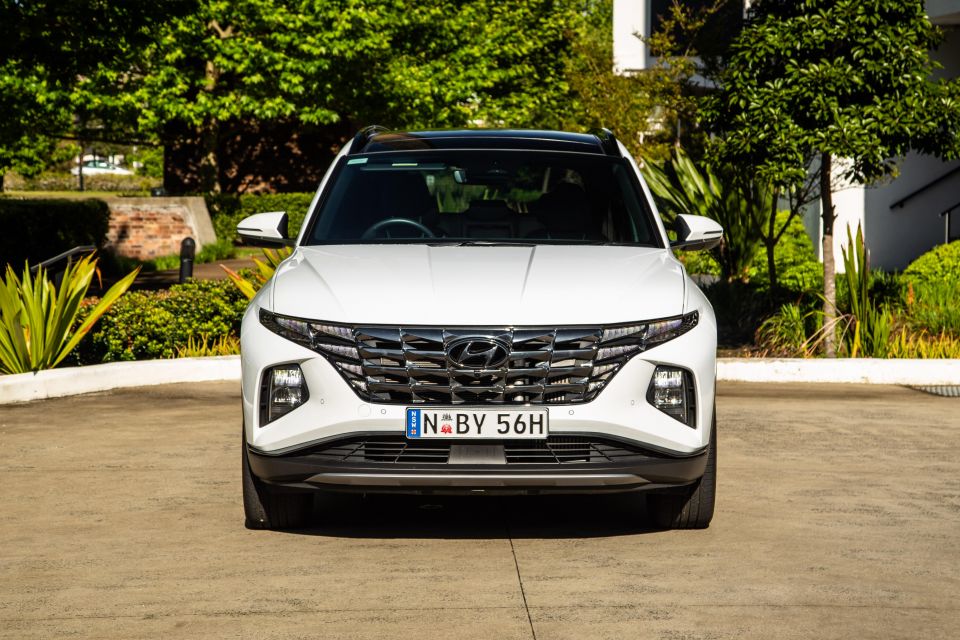
Since launching in April 2021, Hyundai has increased the list price of the Tucson range by $400, taking the Highlander 2.0D AWD tested here to $52,400 plus on-road costs.
Next rung down is the same Highlander trim, but with a 1.6-litre four-cylinder turbocharged petrol engine instead of the diesel, and priced from $50,400 excluding on-roads. Buyers can also opt for the naturally-aspirated front-wheel drive Highlander with a 2.0-litre petrol engine from $46,400 plus on-roads.
Mind, if you’re more frugal with your money and don’t mind ditching some of the luxury features, you can get into a Hyundai Tucson for as little as $34,900 plus on-roads, which packs the same NA 2.0-litre engine with front-wheel drive.
Range-topping rivals include the Toyota RAV4 Edge AWD Hybrid ($52,700), Mazda CX-5 D35 Akera AWD ($53,880) and Kia Sportage GT-Line Diesel AWD ($52,370).

2023 Hyundai Tucson pricing
Prices exclude on-road costs
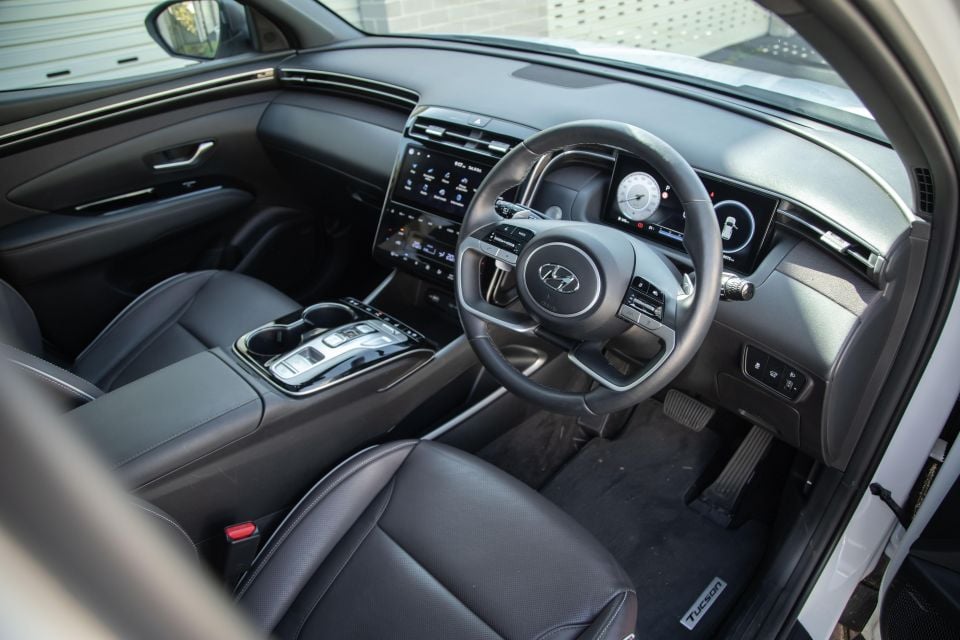
Buy your new car without the stress. It's fast, simple and completely free.

Great service from Travis and team, second time I have used this business would not hesitate to recommend them to anyone
Craig C.
Purchased a Ford Ranger in Sunshine Coast, QLD
CarExpert helped Craig save thousands on his Ford Ranger, now let us save you on your next new car.
Find a dealOur Tucson Highlander tester came with the optional brown leather-appointed seats option which immediately lifts the overall ambience in the cabin (you can also get Grey), and for a negligible cost.
At the very least, it looks and feels semi-premium, whereas others might describe it as straight-up luxurious given the seat heating and cooling functions alone meaning the leather is perforated from top to bottom.
Those seats are thickly cushioned, too, on both seat and seatback with contrast piping and stitching to boot, along with decorative metal-look inserts which frame the headrests.
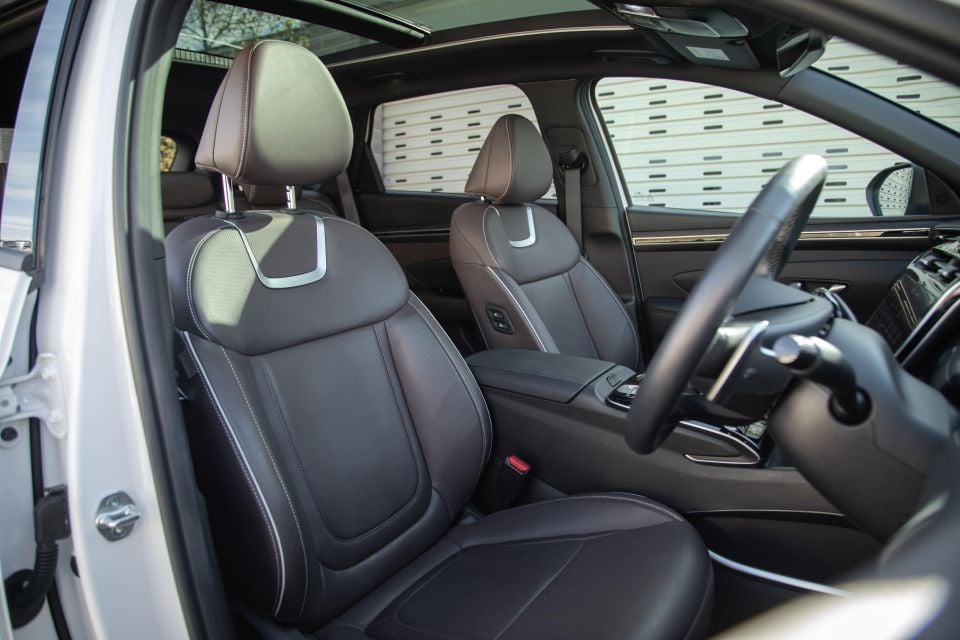
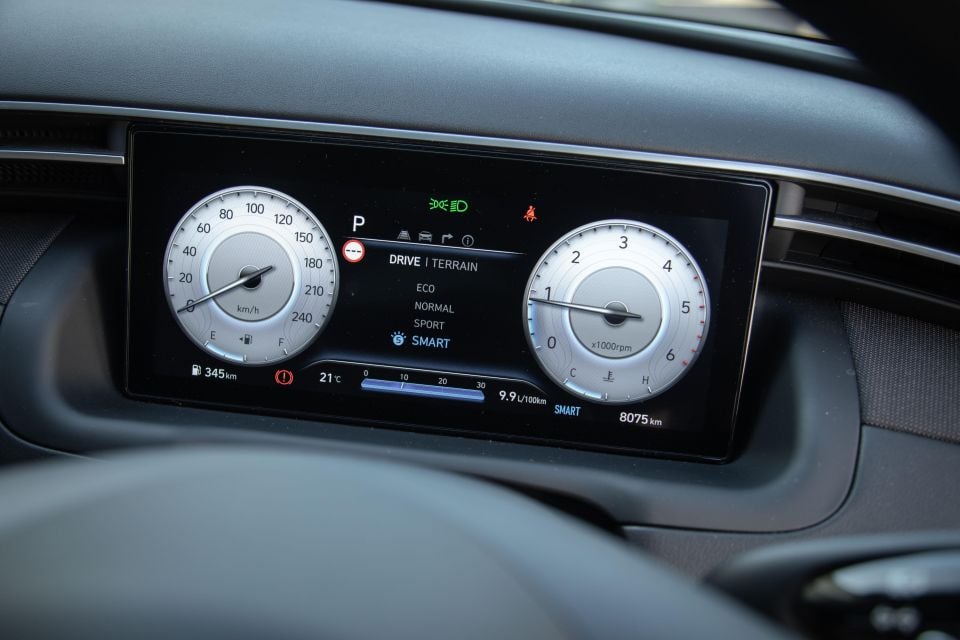
You’ve also got the added convenience of the driver or rear-seat passenger being able to electrically move the seat and seatback forward or aft for easy access or increased rear legroom – as long as you remember they’re actually there.
Like the exterior, the cockpit is an entirely digital take on cabin design. One that ditches all manner of knobs and dials in favour of touchscreens and haptic buttons, except for those on the steering wheel and drive select panel.
In a move that’s becoming increasingly popular with carmakers these days, there’s also no traditional shifter. Not even a small toggle switch like Porsche uses. Instead, a few metal-look gear select buttons (P, R, N and D), which frees up more storage space for the likes of sunglass cases, phones and keys, etc.
Both the driver’s display and central touchscreen offer crystal-clear graphics and colour reproduction, though at 10.25-inches, they’re almost seem small in what is a cavernous interior space. Even the Kia Sportage gets larger 12.3-inch displays.
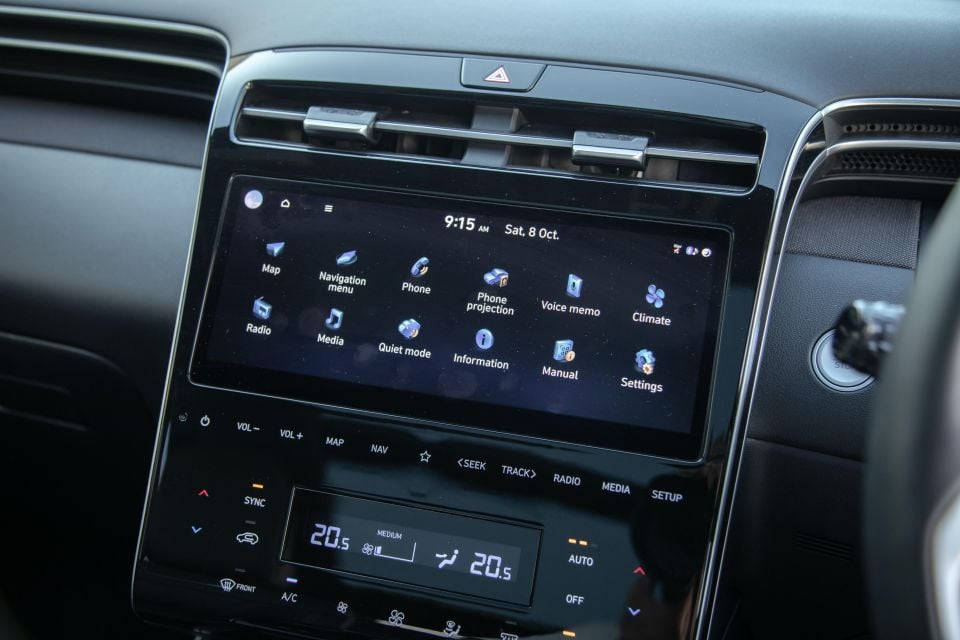
But here’s the issue. Call it piano black or gloss black, either way, there’s an awful lot of it up front in Tucson’s cockpit, and after only a few days, it’s already covered in smudgy, oily finger marks.
Not ideal and much like black cars – they look brilliant after a wash – and terrible a few hours later.
Apart from the annoyance of not having a physical volume knob, the Tucson also lacks wireless Apple CarPlay (it does get wireless charging), and I’m finding the wired version a bit buggy, even after trying a couple of different Apple-brand cables.
That’s USB-A, not the faster, better-fitting USB-C versions. Still, there are plenty of them – two up front and two out back for rear-seat passengers.
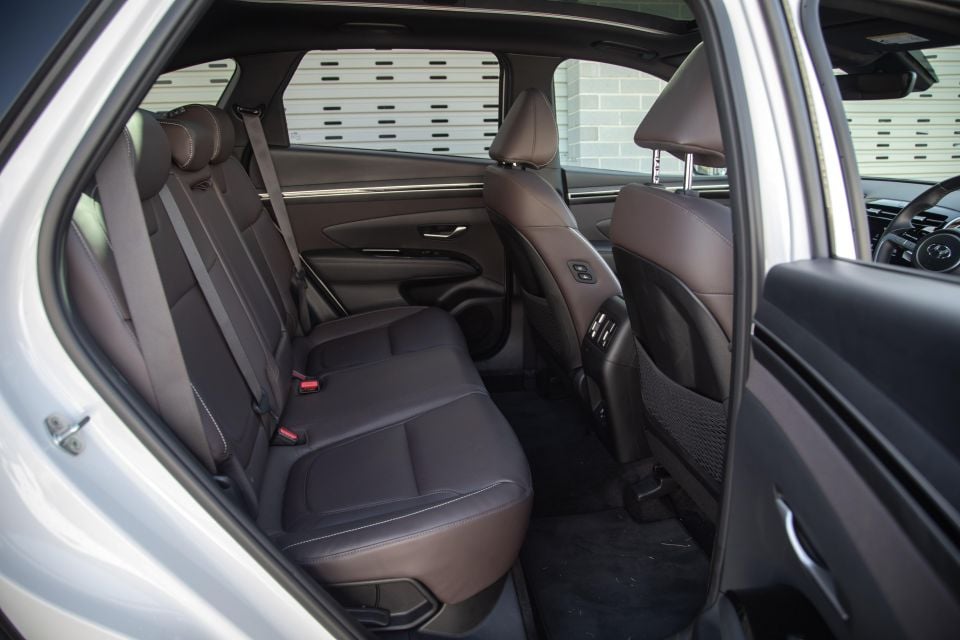
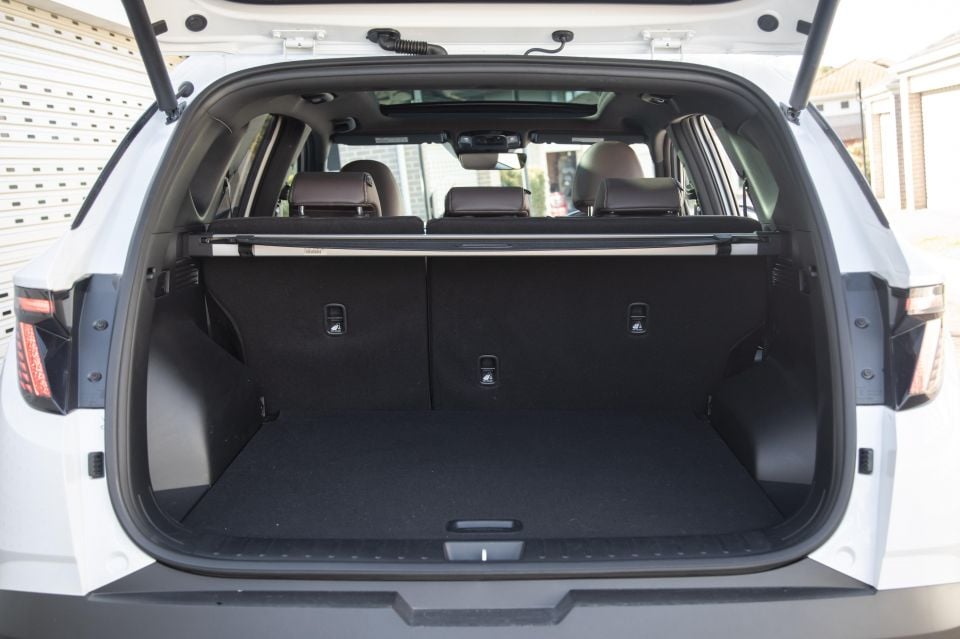
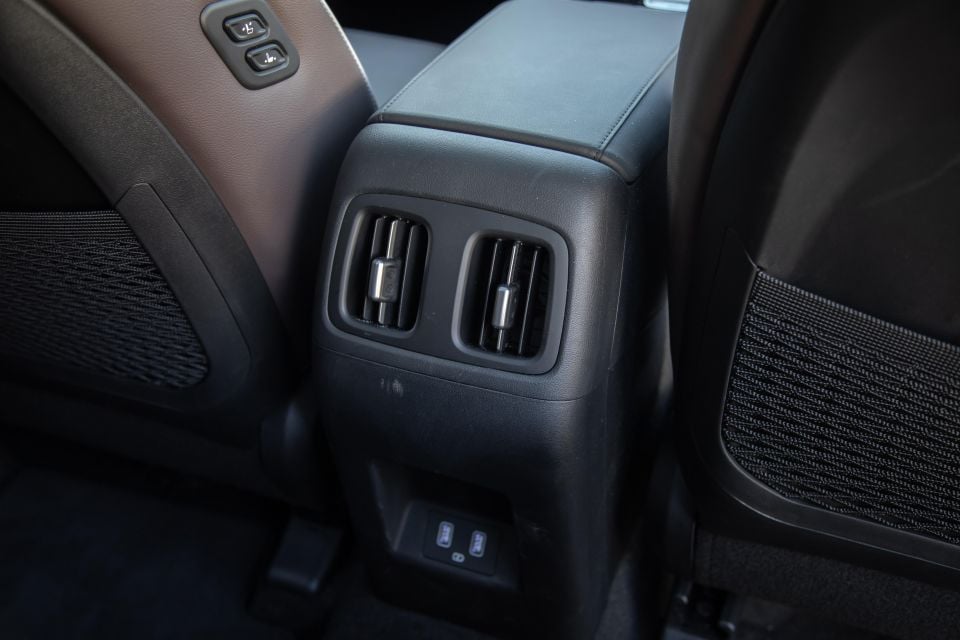
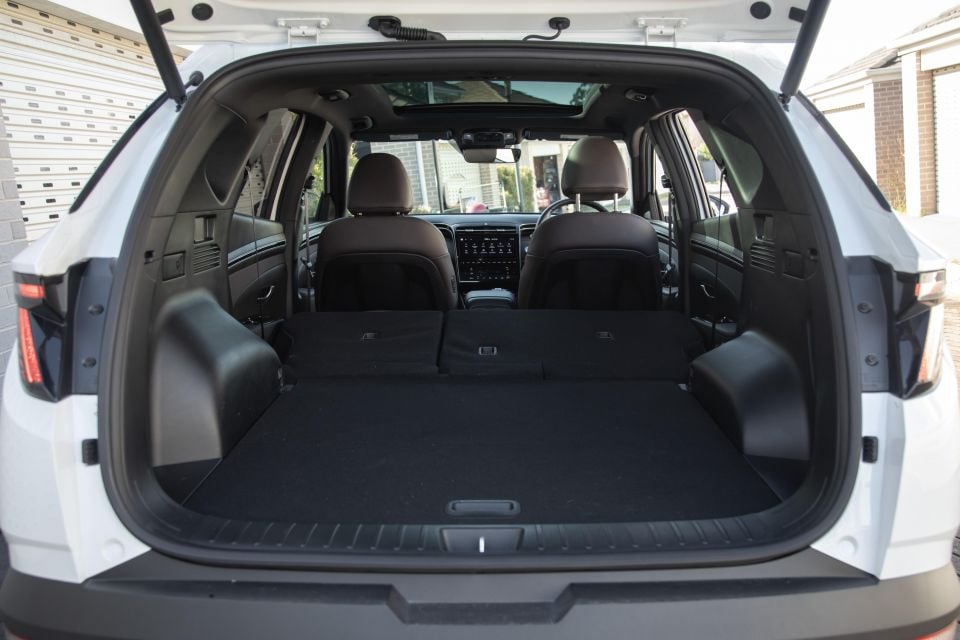
Back seat passengers also get well-contoured and comfortably-cushioned seats, as well as a centre armrest with two cupholders and a stack of leg and elbow room.
Boot space behind the second row amounts to 539L, which is just short of the related Sportage (543L), but trumps the CX-5 (442L). The RAV4 is the clear winner in the class with up to 580L available back there.
Conveniently, you can simply pull levers in the boot that automatically fold the rear seats – almost flat.
It’s also important to note, both Tucson and Sportage get a full-size spare wheel hidden under the boot floor.
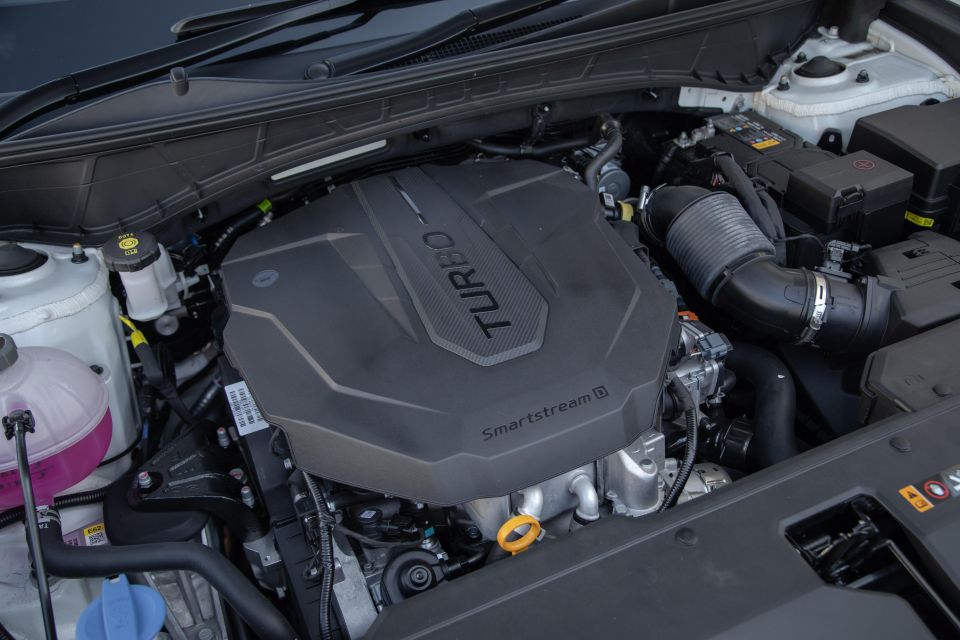
As the range topper the Tucson Highlander CRDi gets a 2.0-litre turbo-diesel four with 137kW of power at 4000rpm and a robust 416Nm of torque from 2000rpm-2750rpm. It’s paired with an eight-speed automatic transmission sending drive to all four wheels on demand.
Alternatively, buyers can save more than a few thousand by choosing the 1.6-litre T-GDi turbocharged petrol four outputting 132kW at 5500rpm and 265Nm between 1500rpm and 4500rpm through a seven-speed dual-clutch gearbox.
As a cheaper option into Tucson Highlander ownership, there’s also a naturally-aspirated 2.0-litre petrol engine that makes 115kW and 192Nm driving the front wheels exclusively through a six-speed auto transmission.

While the diesel version commands a two-grand premium over its 1.6T petrol sibling, there’s not the difference in fuel consumption as you might have expected. The more frugal diesel brings a 6.3L/100km combined consumption claim, the turbo petrol uses 7.6L/100km by comparison.
However, on test around town, our Highlander CRDi returned an average of 9.4L/100km, due to the start/stop driving style that better suits the petrol motor.
Importantly, it quickly settled into a more economical state of consumption by dropping to 7.3L/100km during longer motorway stints of around 100 kilometres or so at an average speed of 90km/h.
The Highlander diesel also incorporates Hyundai’s Multi-Terrain Mode exclusively. It adds Snow, Mud and Sand settings for the all-wheel-drive system. However, both engine types come with a suite of selectable drive modes that includes Smart, Eco, Normal and Sport options.

First off, the driving position is excellent, placing the driver deeper into the cockpit that some of its high-riding rivals, yet still boasting good all-round vision.
We also like the fact drivers can turn off ‘lane-keeping assist’ simply by holding down a button on the steering wheel for a few seconds.
But while the turbo-diesel might be the pick of the crop, it’s not the most refined powertrain – especially under load – regardless of whether you accelerating on the flat or climbing a hill. It’s that nasty gravelly noise either way.
To be fair though, I can’t actually think of a single four-pot oiler that manages to successfully mask its inherent unrefined nature all that well – not one.
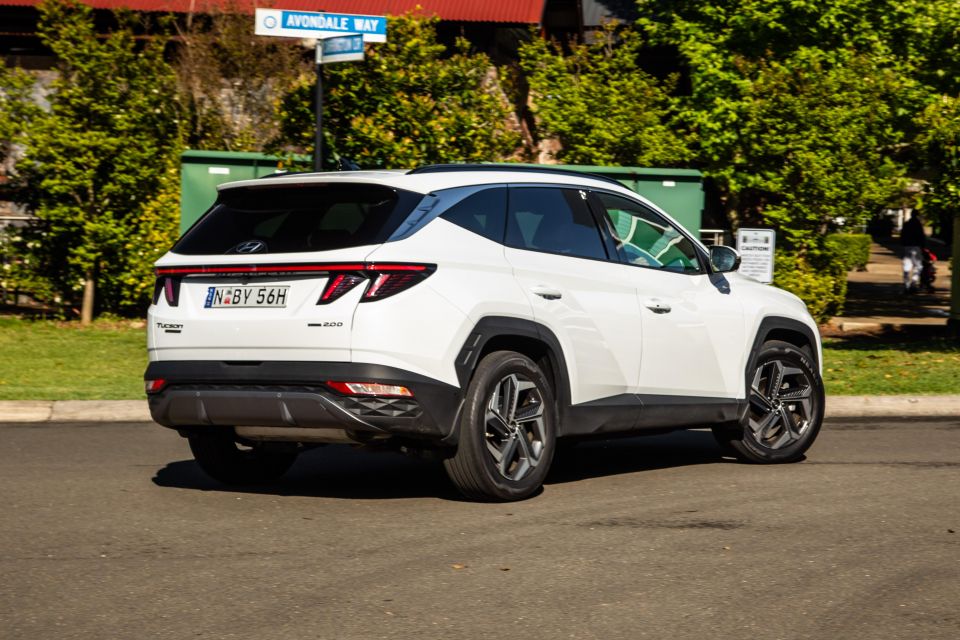
The tractor-like rattle in the Tucson only starts to subside when the smooth-shifting, eight-speed auto kicks up a gear, and the rpms drop well below 2000rpm.
That’s when there’s little or no load on the engine; by then you’re all but cruising, and only then could you call it quiet and befitting of the semi-premium class of car the Highlander is.
Once you’re up to speed on the motorway though, the Tucson takes on an entirely different character – virtually purring along at 100km/h without so much as a hint of the oiler that lurk beneath.
Drivers have the choice of switching between various drive modes including Sport, but don’t bother, it just holds onto the gears longer (and sends more torque to the rear), thereby accentuating the mechanical racket. Best to just leave it in Normal or Smart full-time.
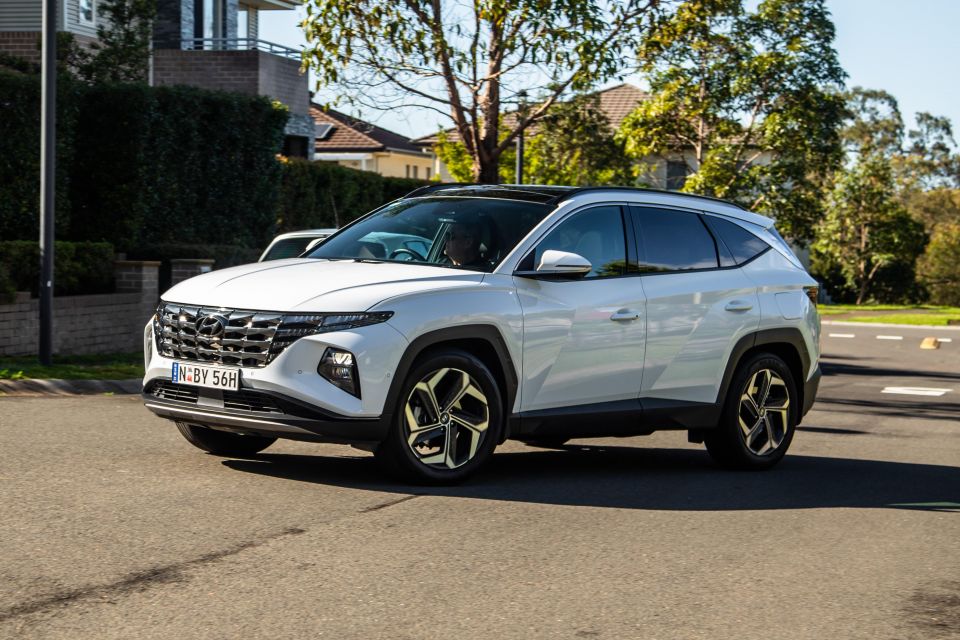
Unlike the Sportage which gets a local suspension tune, the Tucson does with a global tune; and for the most part it gets the ride/handling balance almost right. If anything, it skews slightly sporty in terms of overall ride compliance.
The proving ground has been my local Northern Beaches, where broken road and shabby pothole repairs remain the norm. Most of these barely register inside the cabin, especially broken road and smaller bumps.
It’s no corner carver but it’s certainly sound in the bends, with just some gentle roll on turn-in and good weight balance overall. It’s not the sort of thing that wants to be hurried through a roundabout, but there’s good composure and a willingness to change direction quickly, if necessary.
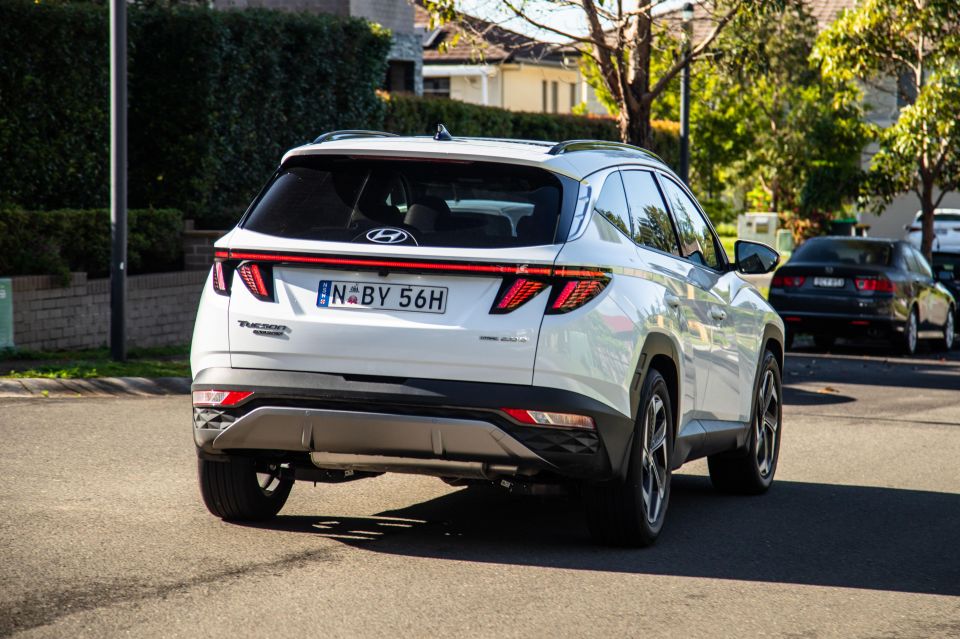
Where expert car reviews meet expert car buying – CarExpert gives you trusted advice, personalised service and real savings on your next new car.
Apart from engine response, which can be a bit laggy, all the other mechanical controls tend to be linear – namely brakes and steering. There’s no real feedback from the latter, but the weighting is at least consistent from through a turn.
The brakes don’t feel massively powerful or initially grabby like some, but urgent stopping requires a proper boot full, though pedal feel is true.
No surprise it’s the diesel which can haul the bigger trailer loads, with a towing capacity of 1900kg, and a towball download weight of 100kg.


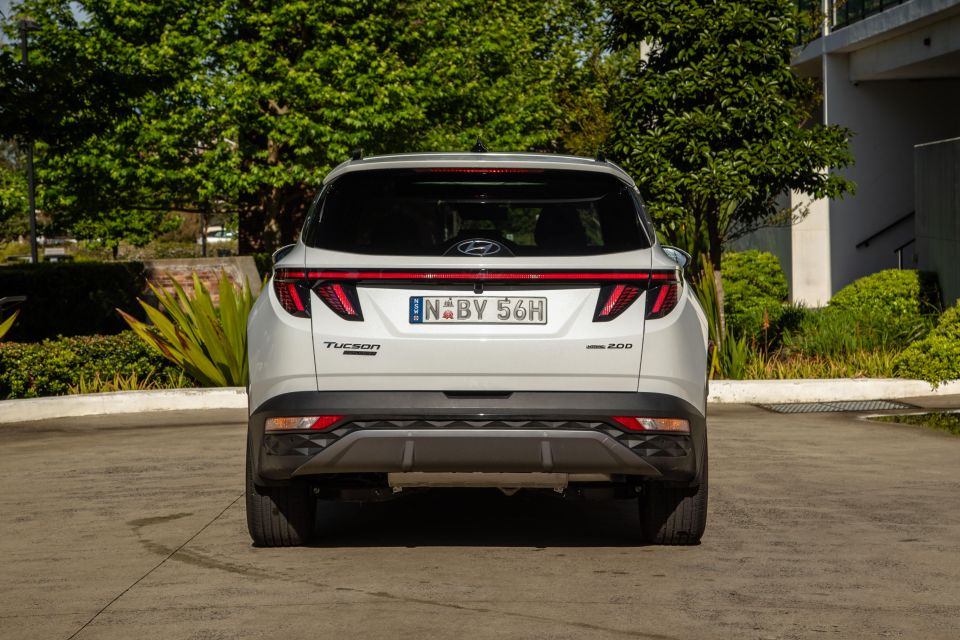

Tucson Highlander highlights:
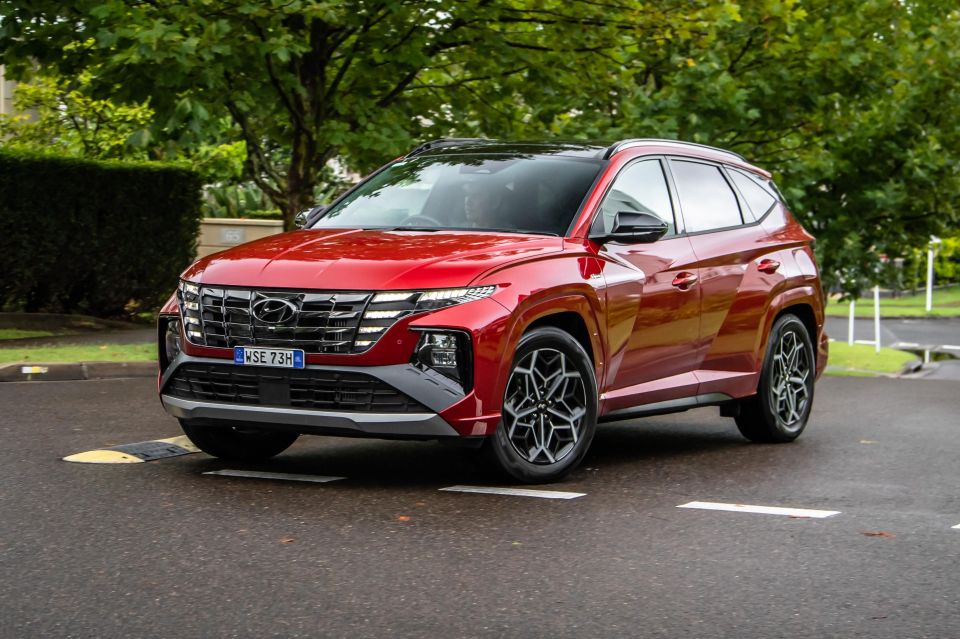
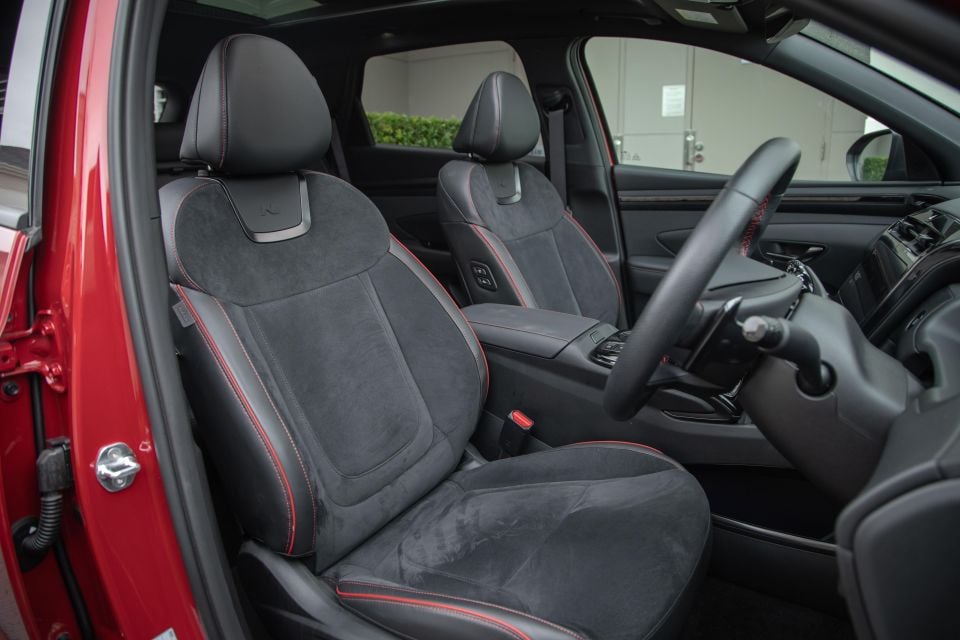
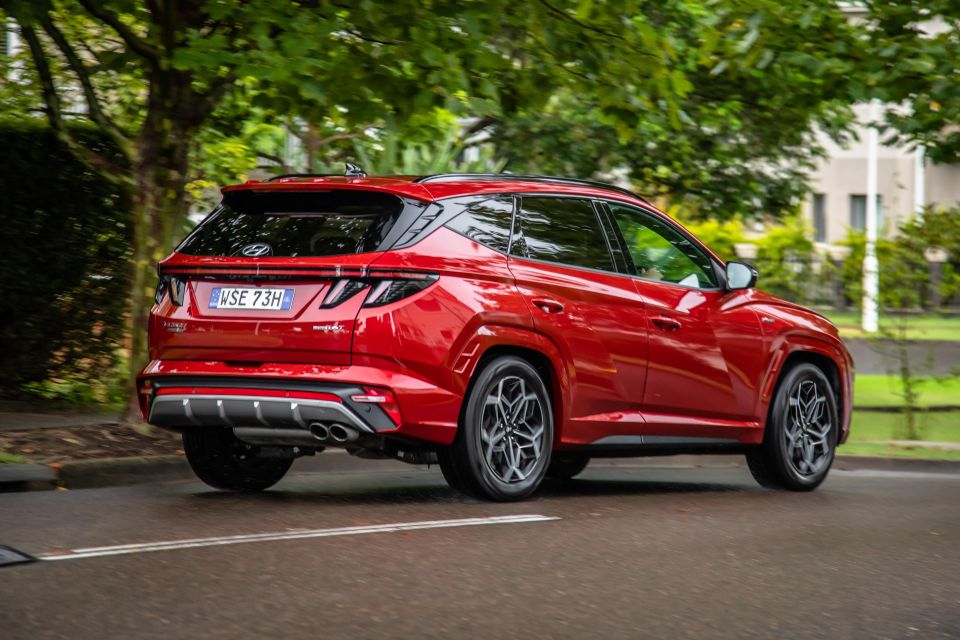
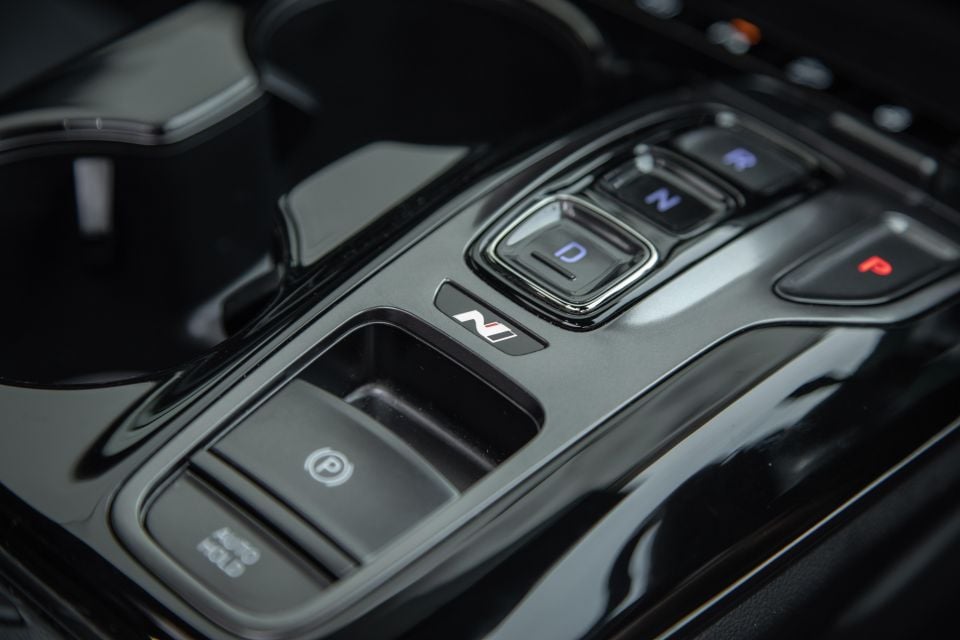
Options for the Tucson Highlander are few and far between but include premium paint ($595), choice of Grey or Brown leather upholstery ($295), and N Line Option Pack ($1000).
N Line Option Pack adds:
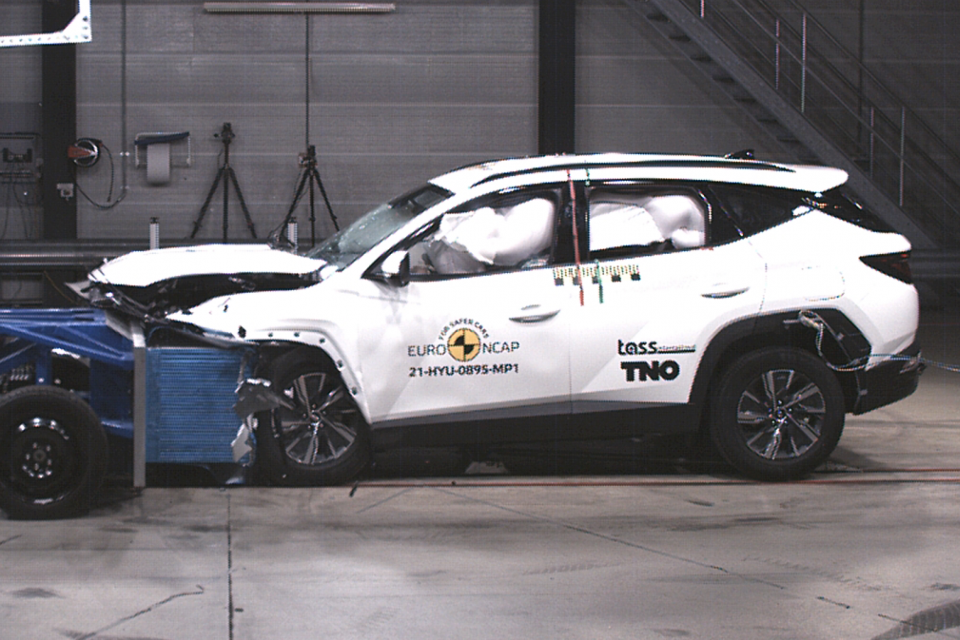
The Tucson line-up gets a five-star ANCAP safety rating issued for all versions from its May 2021 debut.
Adult and child occupant protection was 86 and 87 per cent respectively, while vulnerable road user was 66 per cent and safety assistance scored 70 per cent.
Standard safety features include:
The flagship Highlander grade adds standard features such as LED headlights and tail lights, Blind Spot View Monitor (a nifty camera/display-based in-dash blind-spot monitor system) and formally adds reverse AEB, though it will autonomously brake if it senses a potential rear-cross traffic collision.
The blind-spot detection system will also adjacent vehicles, while a Rear Occupant Alert Advanced system monitors the second row after the engine has shut down and the doors are locked, triggering an audible warning if movement is detected. This is a great potentially life-saving feature.
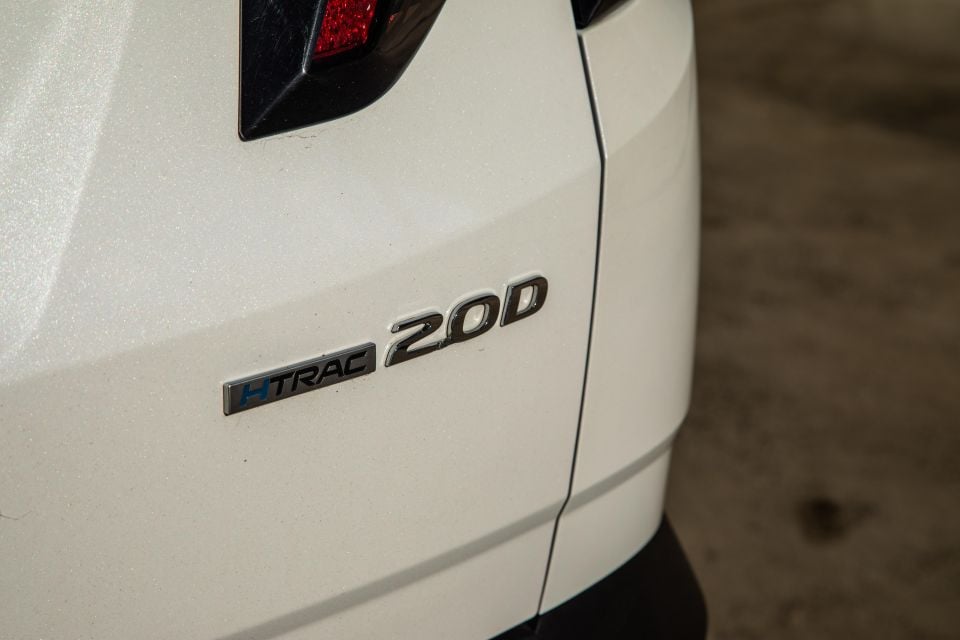
The Tucson range is covered by Hyundai’s five-year, unlimited-kilometre warranty.
Unlike the 1.6T which requires servicing every 12 months or 10,000kms, the 2.0-litre diesel and petrol versions stretch their service intervals out to 15,000km which is more in line with competitors.
Hyundai offers service packages costing $957 (three years/30,000km), $1276 (four years/40,000km) and $1595 (five years/50,000km) upfront, the latter working out to $319 per year.
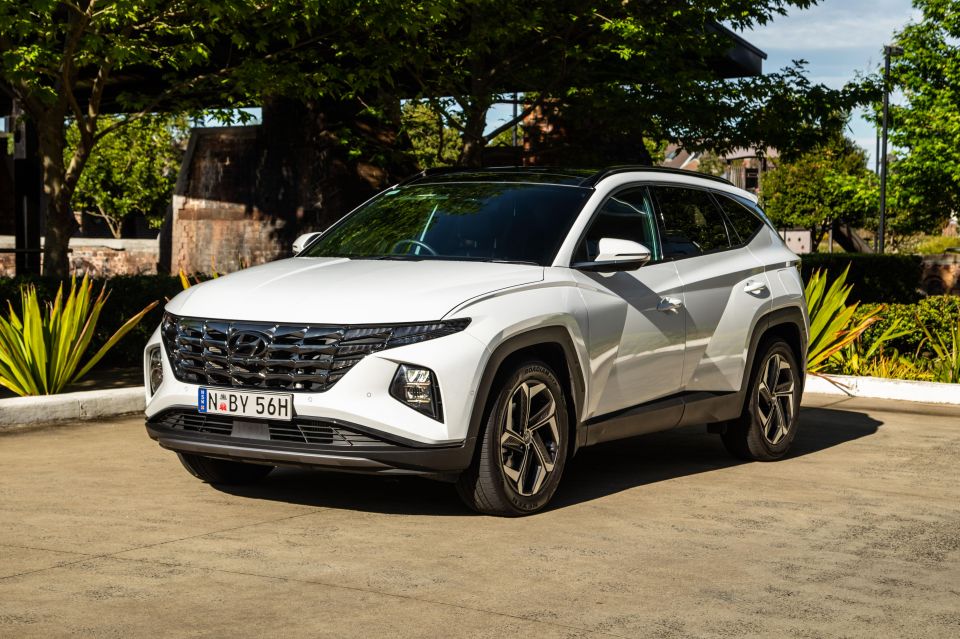
Even at $52,000 the Tucson Highlander represents good value for money, thanks to the extensive list of luxury features and spacious cabin.
But that’s pretty much the same for anyone of its top-four rivals too. In the end it comes down to design, space, practicality, engineering and tech – and the Tucson is strong across the board.
For an extra thousand bucks, I’d add the N Line Pack for the leather and suede trim alone, not to mention eight other goodies that come with it. And while you’re at it tick the box for Brown leather too, it really does lift the premium-ness inside.
Mind, I’d still love a more refined diesel even if that meant paying extra for an inline-six, but other than that, there’s little to whinge about at this level in the Tucson range.
Nevertheless, I remain on the fence when it comes to Tucson styling versus Sportage. I switched back again only this morning, after eyeing off the front three-quarter view of the Hyundai – it stands out.
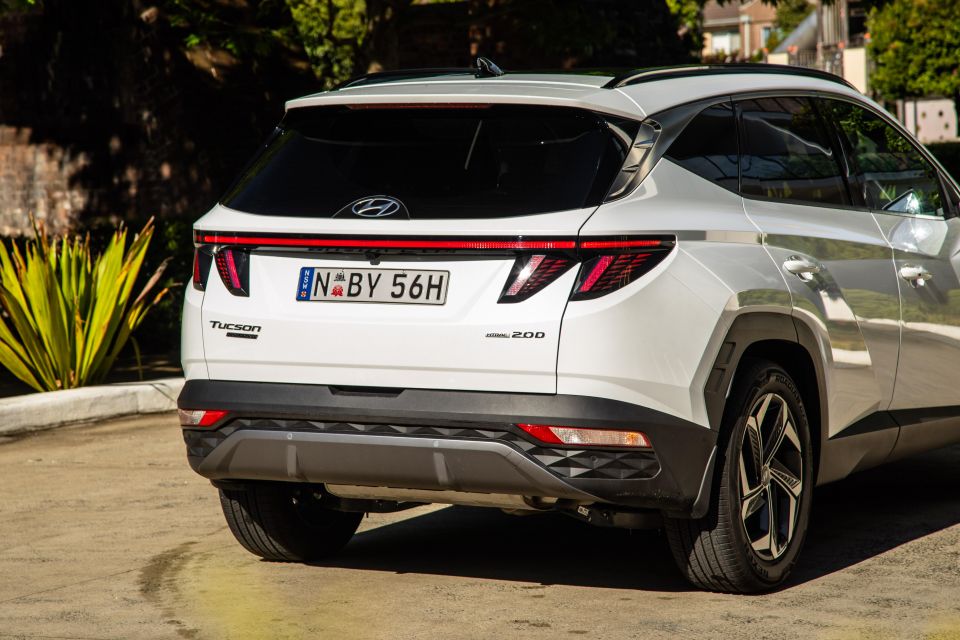
Click the images for the full gallery
Where expert car reviews meet expert car buying – CarExpert gives you trusted advice, personalised service and real savings on your next new car.
Anthony Crawford is a CarExpert co-founder and senior presenter with 20+years in automotive journalism and content creation.


Damion Smy
10 Hours Ago
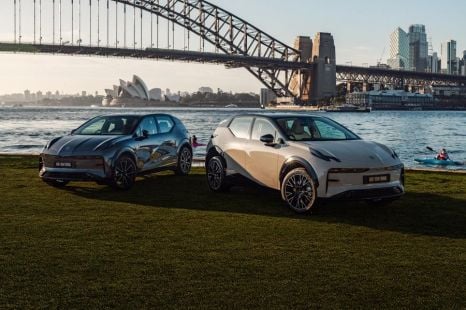

Max Davies
16 Hours Ago
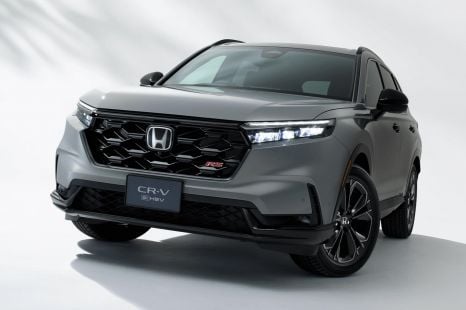

James Wong
2 Days Ago
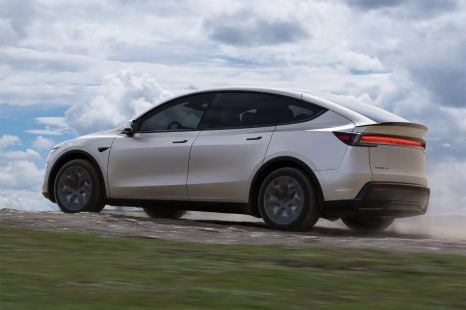

Derek Fung
2 Days Ago


Max Davies
3 Days Ago


Damion Smy
4 Days Ago